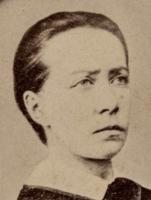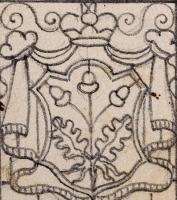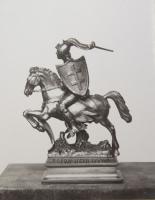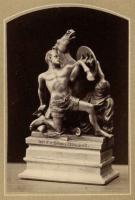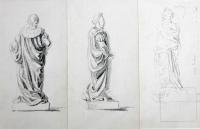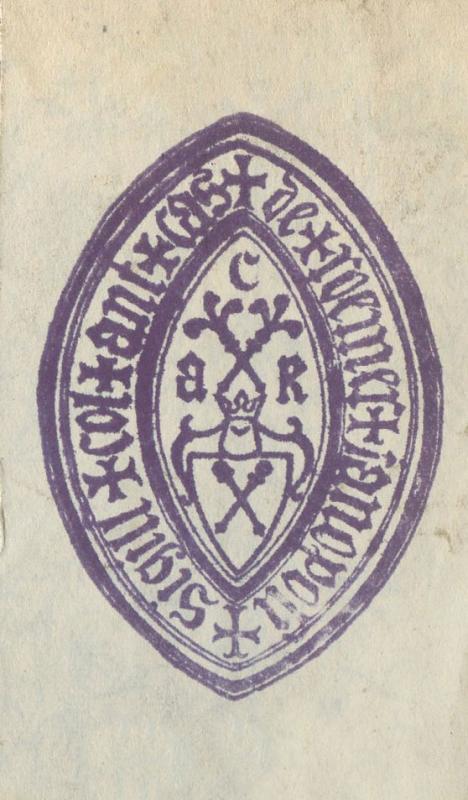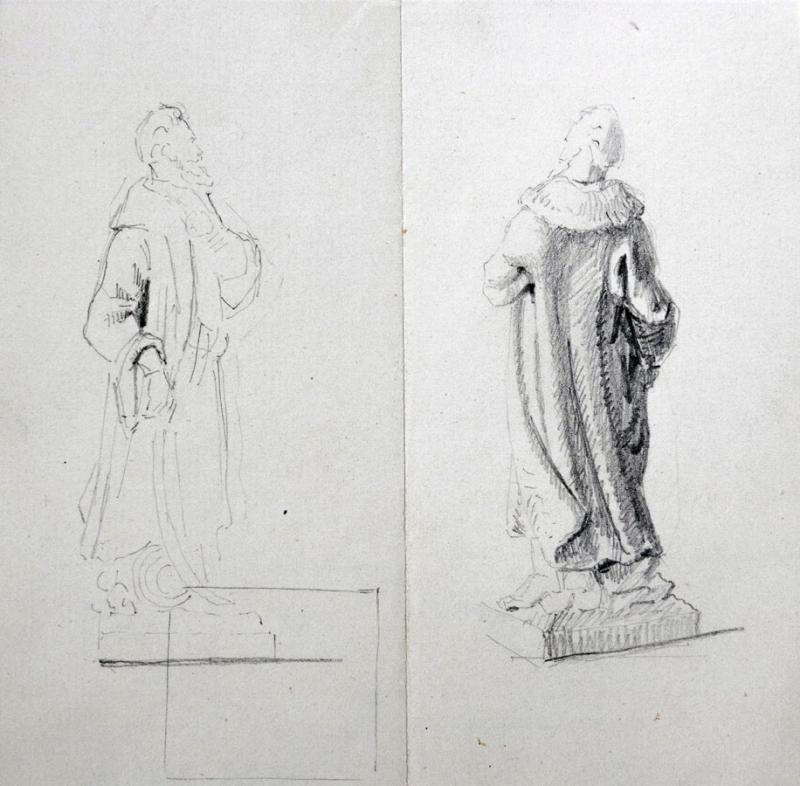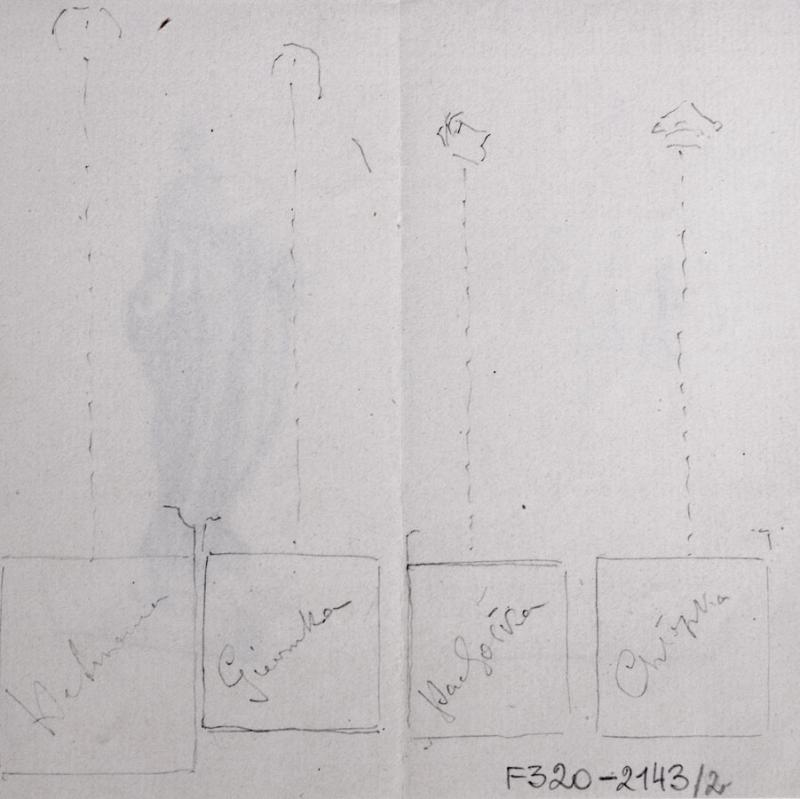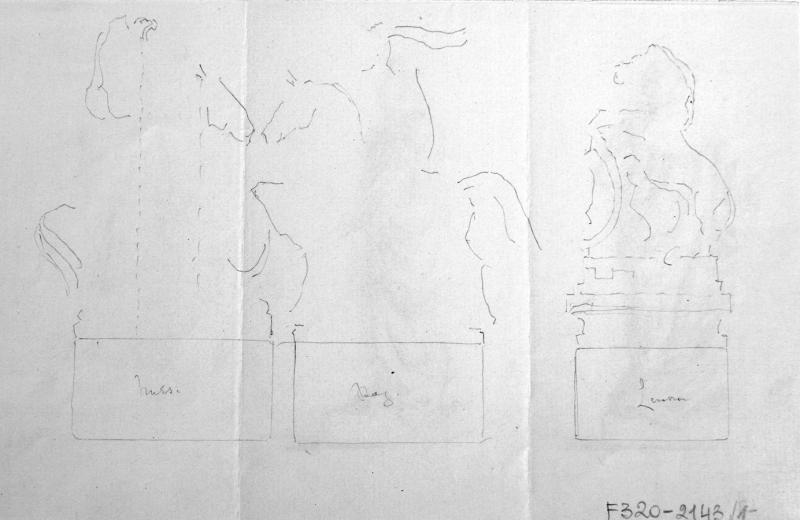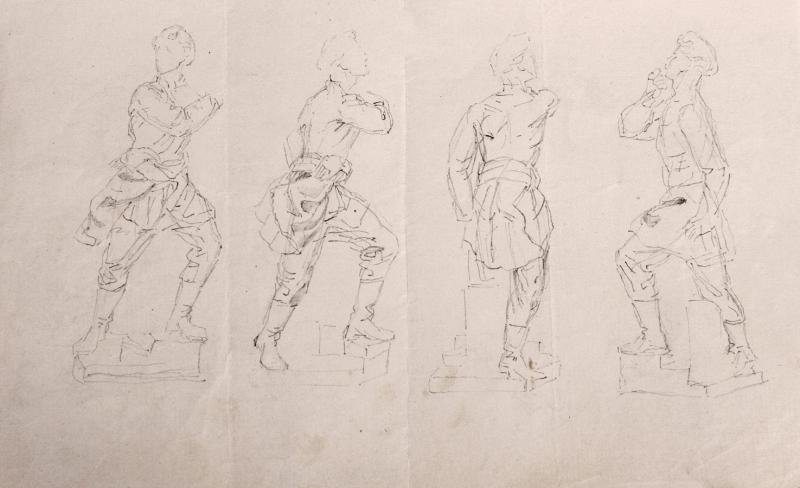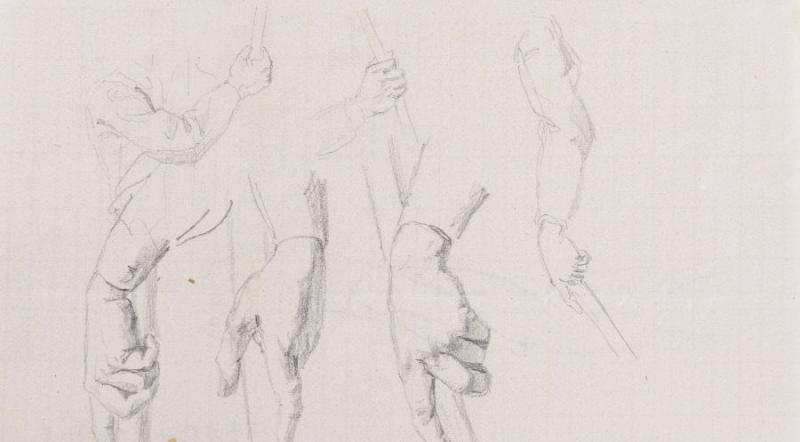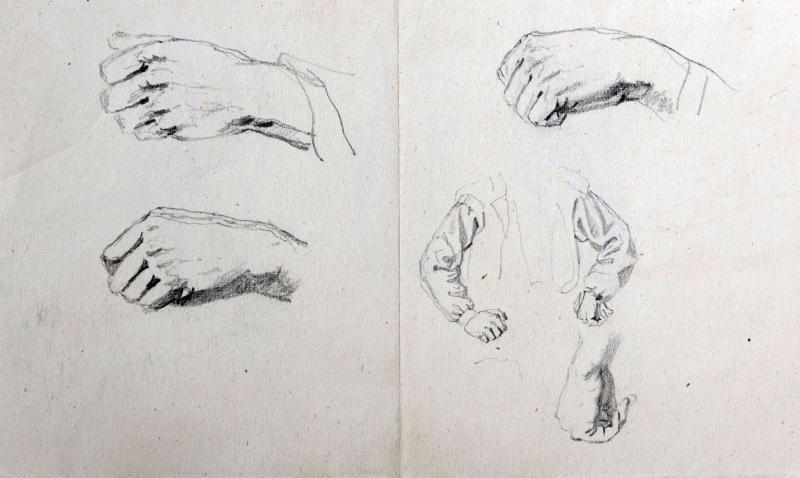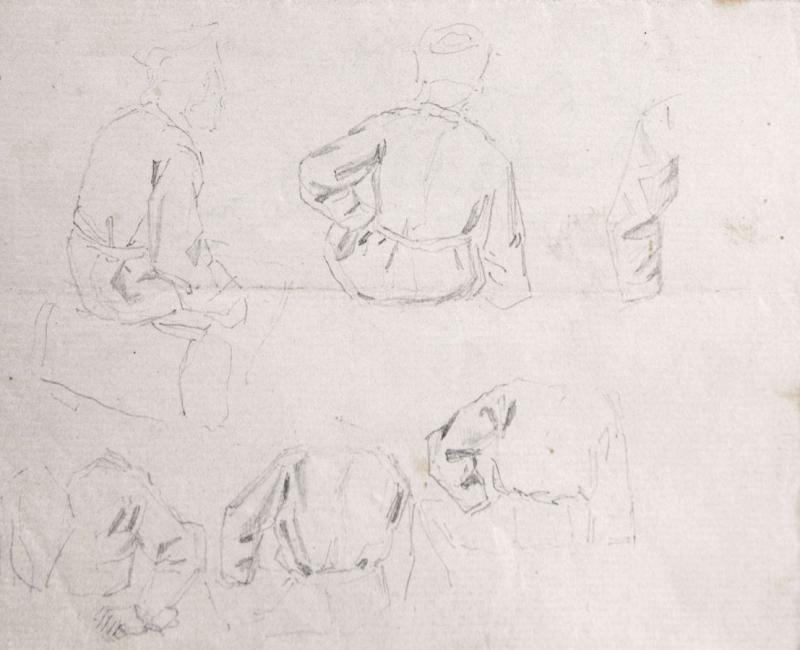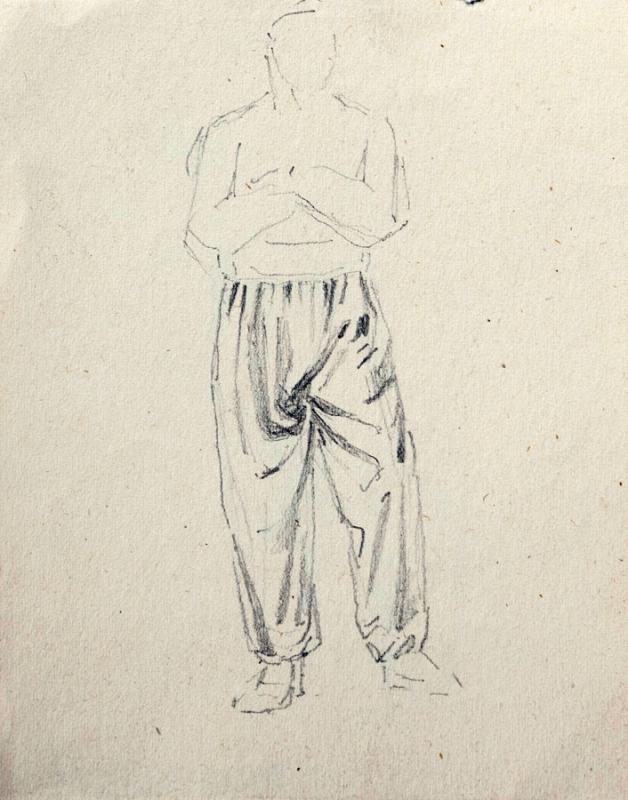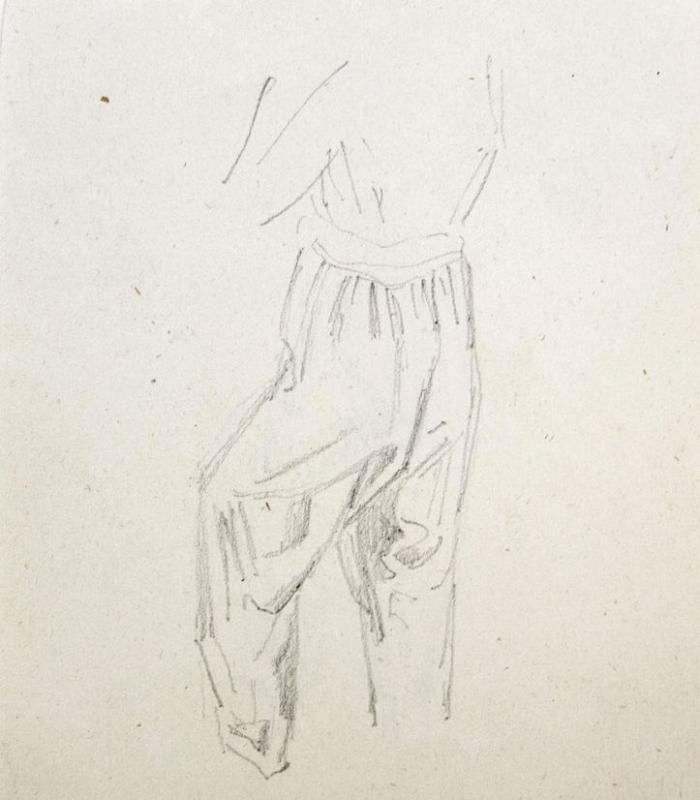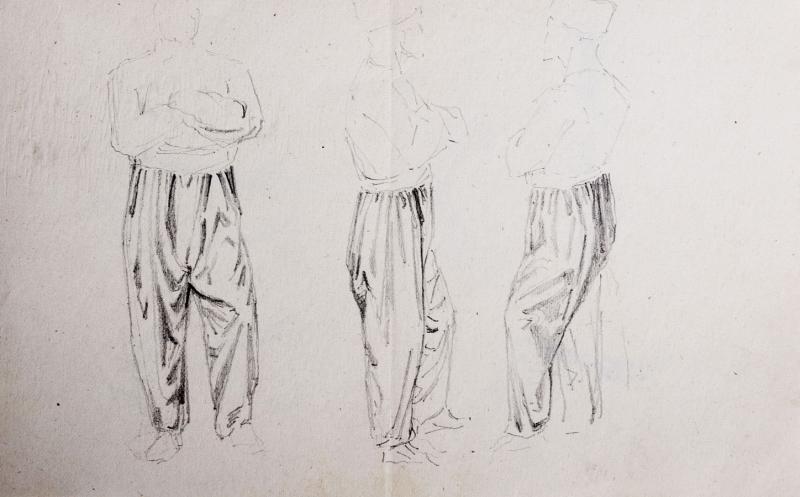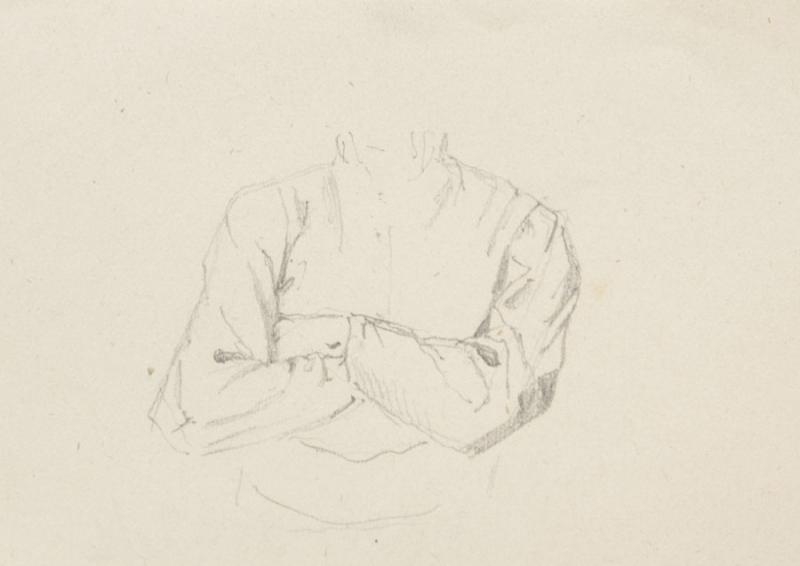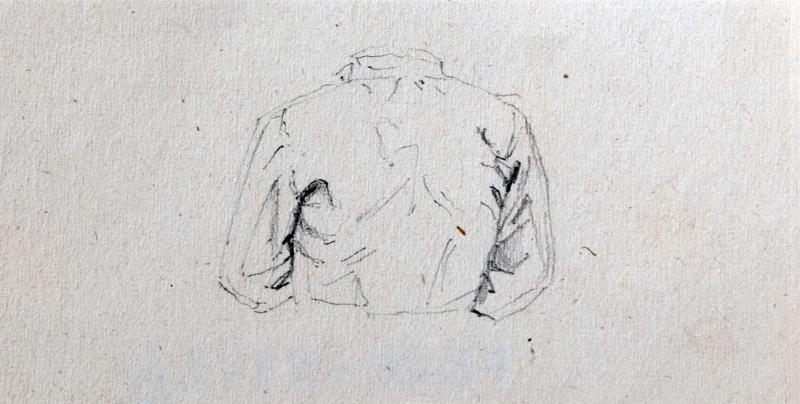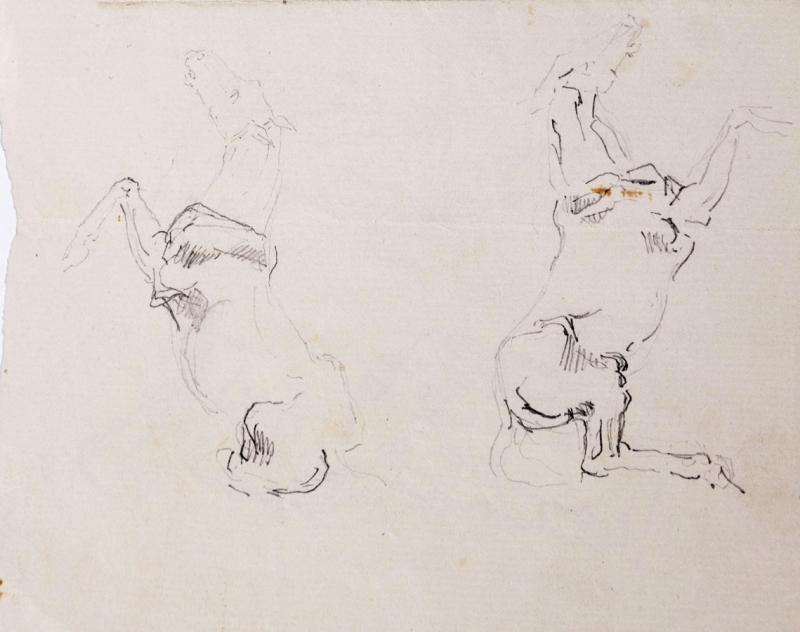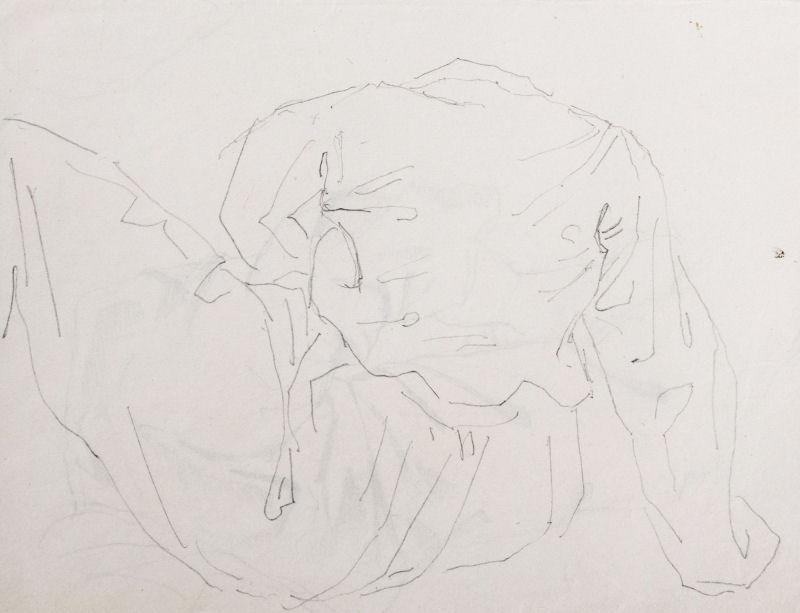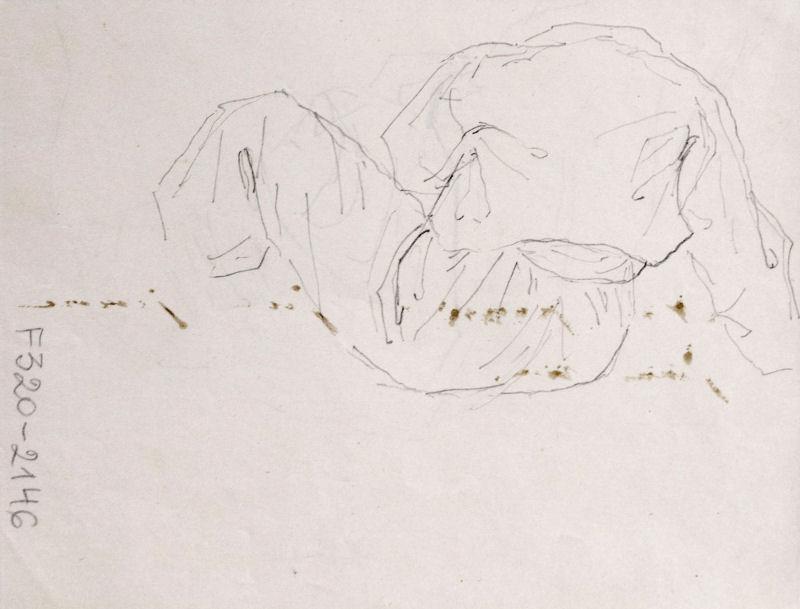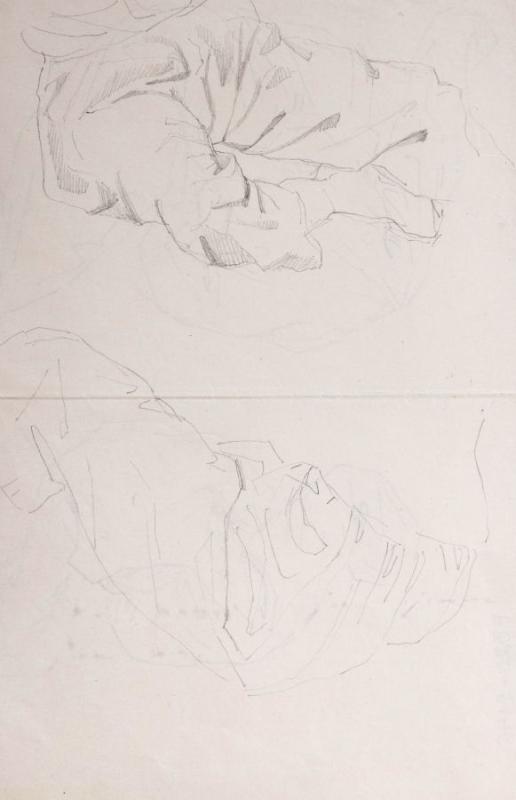Sketches of the chess pieces
LMAVB RS F320-2143, lap. 1r
In the Manuscripts Department of the Wroblewski Library of the Lithuanian Academy of Sciences (LMAVB RS), the “Collection of Drawings and Sketches of Lithuanian Artists” (F320) contains a bundle of Helena Skirmuntt's sketches of chess pieces. A total of 6 storage units, totaling 10 sheets with pencil sketches of Helena’s chess pieces. There is not a single sketch that is signed or dated by the author. Short notes are written in pencil next to the images of some figures. For example, next to one of the three portraits of Jan III Sobieski (drawn from the back and from the sides), a note is written in pencil: “wys. Króla.” (King's Height). Some of the pieces are drawn extremely carefully, from various angles, with the smallest of details, while other sketches contain only a visible silhouette, hastily marked with a contour line. The four figures represented by the vertical dotted lines would not be recognizable if there were no abbreviations of the names below them. Having composed the base ideas of the pieces next to each other in descending order, the sculptor tackled the problems of proportion, mutual relationship and hierarchy: the Squire (bishop) is smaller than the Hetman (equivalent to the Queen), but larger than the Page and the Lad (pawns). The figures of the Flag-Bearer and the Tatar stand out due to the numerosity and variety of sketches.
Some of Helena Skirmuntt's sketches of chess pieces seem to be drawn during Helena’s period of exile, likely in Tambov in 1864. However, most of them were done during the sculptor’s last creative period, in Balaklava, on the Crimean Peninsula, around 1870–1873.
After the death of Helena Skirmuntt, the sketches were transported from Crimea to Pinsk, to the Butrymowicz-Skirmuntt palace. Helena’s daughter Konstancja Skirmuntt took care of them. After Konstancja’s death in 1934, the sketches, together with other art pieces, were transported from Pinsk to Vilnius, where Helena’s other daughter, Kazimiera Römer (1865–1938) and her son Antoni Römer (1889–1973) kept them in the apartments belonging to the Römer family, on Tilto Street. In the first years of the Soviet occupation, the collection of Helena’s sketches was moved to the former palace of the Tyskiewicz counts, the then State Wroblewski Library (now the Wroblewski Library of the Lithuanian Academy of Sciences). Here they have been kept ever since.
LMAVB RSS A-64/2
LMAVB RS F320-2143, lap. 2r
LMAVB RS F320-2143, lap. 2v
LMAVB RS F320-2143, lap. 1v
LMAVB RS F320-2144, lap. 1r
LMAVB RS F320-2147, lap. 1r
LMAVB RS F320-2145, lap. 2v
LMAVB RS F320-2144, lap. 1v
LMAVB RS F320-2145, lap. 1r
LMAVB RS F320-2145, lap. 1v
LMAVB RS F320-2145, lap. 2r
LMAVB RS F320-2142, lap. 1r–2r
LMAVB RS F320-2144, lap. 1v
LMAVB RS F320-2146, lap. 1v
LMAVB RS F320-2146, lap. 1r

